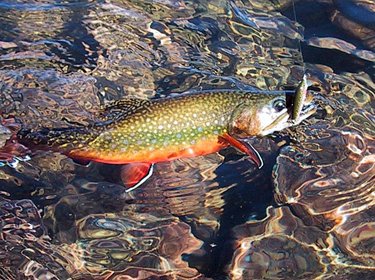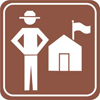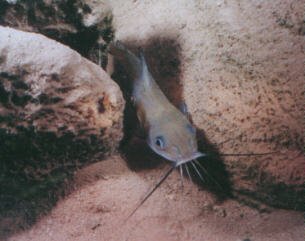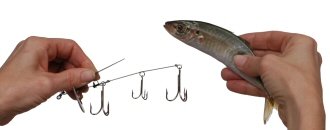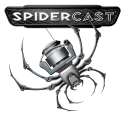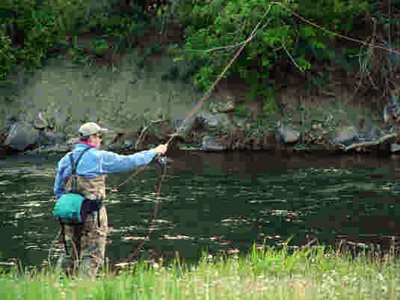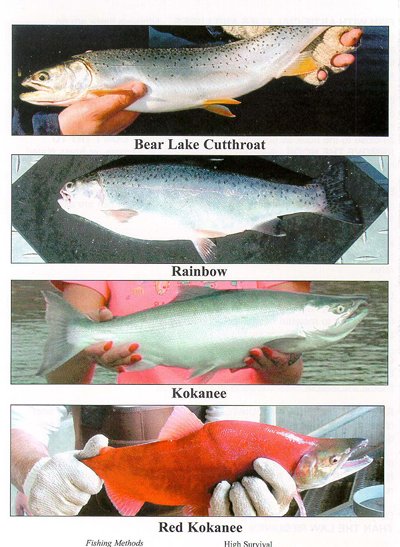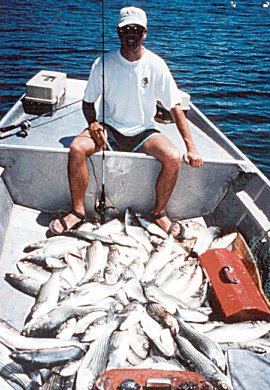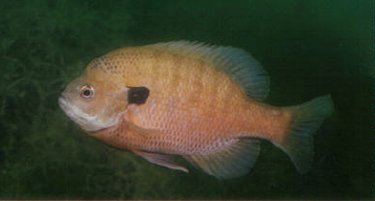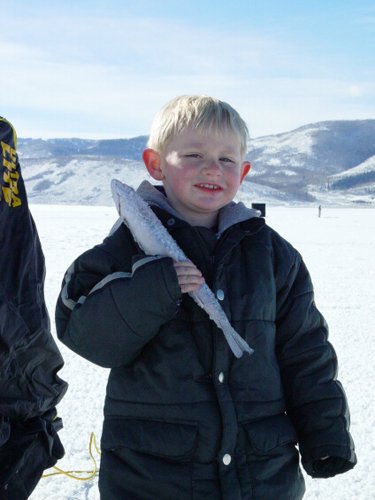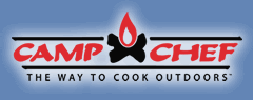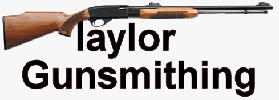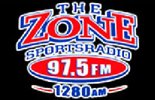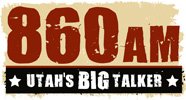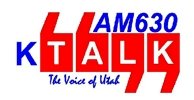On this Page you will find links to the following-
Advisories and Tips
Bass Fishing
Backyard Fishing Ponds
Boating in Utah
Boating Manufacturers
Catch and Release
Competitions
Crawdad Fishing Tips
Destination Waters
Forecasts and Reports
Fishing Clubs and Organizations
Flyfishing Tips, Reports and Guides
Gear Manufacturers
Guides and Outfitters
Ice Fishing
Kids Fishing/ Urban Fishing
Species Specific Fishing Tips
E-mail us with your adventure
Lake Powell Fishing Report--Waynes Words
Magazines and Publications
News
Purchase a Fishing Licence
Proclamations (PDF File)
Reports
Recipe Forum from DWR
State Fishing Records
Species Identification
Steamflow Conditions
Sensitive Species
Spearfishing in Utah
Tips
Walleye Fishing- Rocky Mountain Anglers
Whirling Disease
Logan River Salmonfly Reintroduction Project
>>See a movie Clip from Rapala<<
Brag about your latest fishing Adventure and E-Mail us!
Bass Fishing in Utah
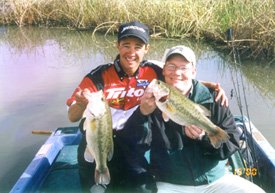
Visit the Utah Bass Federation
Utah's Bass Waters
Catch a Cure for Cancer
Tournaments
Backyard Fishing Ponds

Building your Backyard Fishing Pond begins with meeting a few regulations if you plan on planting gamefish or anything beyond Koi. Provided are a few useful links to get you started.
Press Release on Pond where fish were siezed
Fish Stocking Rules
The Department of Agriculture has responsibility for administering fee fishing and commerical aqualcuture. These activities are covered under Rule R58-17.
Rule R657-16. Aquaculture and Fish Stocking.
Rule R657-3. Collection, Importation, Transportation, and Possession of Zoological Animals.
PDF Certificate of Registration to have a private fish pond (Requires Adobe Acrobat, which is available for free)
Fish Health (Aquaculture) Certificates of Registration
Ken's Fish Farm-
Developers of World Record sized Bluegill (Bream), ready to be stocked in your private Pond. They offer many free services to pond owners.
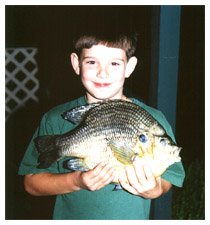
They recently developed the Hy Tech Speck, a very fast growing hybrid that can grow 14 inches in their first Year.
Silver Cup Fish Feeds
118 W 4800 South
Murray, UT 84107
(801) 262-2991

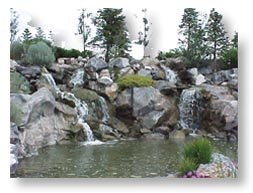
Waterfall built by Bratt at Thanksgiving Point
Barley Straw Bales for your Pond
Earth Systems Fish & Water Gardens
7230 S 900 East
MIDVALE, UT 84047 - 2304
(801) 566-8870
Dripworks Pond Liners
Spring Lake Trout Farm
3409 W 12300 S
PAYSON, UT 84651 - 9660
(801) 465-2934
Earth Ponds Sourcebook and Earthponds by Countryman Press

Utah Koi
3494 W 6925 S
WEST JORDAN, UT 84084 - 1727
(801) 965-8767
POND OWNERS MUST RECEIVE APPROVAL BEFORE STOCKING FISH
By Pete Cavalli, DWR Southeastern Region Aquatic Biologist
Landowners who want to stock fish in their private ponds are reminded that they must obtain approval from the Utah Division of Wildlife Resources (UDWR) before doing so. There are several reasons why this activity is regulated.
First, some fish species can hybridize (interbreed) with other species of fish, which reduces their genetic purity. For example, rainbow trout and nonnative cutthroat trout hybridize freely with native populations of cutthroat trout. Many drainages in Utah contain native cutthroat trout that could be eliminated through hybridization with stocked trout.
Competition between wild fish and stocked fish is another area of concern. Some species of fish will compete with wild fish for food or habitat, which could lead to the reduction or elimination of wild fish populations. Predation on wild fish by stocked fish also can lead to the decline or demise of wild fish populations.
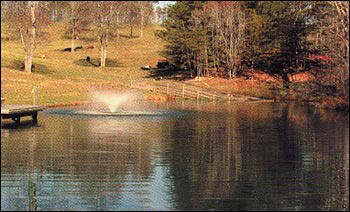
Finally, stocked fish can carry diseases that can be passed on to wild fish. Some diseases in fish can be catastrophic and are difficult or impossible to eliminate after introduction into a stream or pond. Therefore, only fish that come from sources that are certified by the Utah Department of Agriculture and Food can be stocked in private ponds.
The process that pond owners must follow to obtain permission to stock fish on their property is relatively simple, but it does take some time.
The first step is to apply for a Certificate of Registration (COR) from the UDWR. Application forms can be obtained from UDWR offices in Price, Cedar City, Springville, Vernal, Ogden and Salt Lake City, or by calling the UDWR's Wildlife Registration Office at (801) 538-4701. A $25 nonrefundable pond inspection fee, and a $5 nonrefundable handling fee, must accompany the application.
Once the application is received, a UDWR biologist will visit the pond to make sure that it's not situated on a naturally flowing stream. The biologist will also check to make sure that permanent screens are installed on the inflows and outflows, to keep fish from moving out of the pond. Screens must be small enough to stop small fish from leaving the pond, but small mesh often becomes plugged with debris. It's the pond owner's responsibility to keep the screens clean, so they may want to ask a UDWR biologist for advice about the best screen designs.
Processing the application and arranging for a biologist to visit the pond can take several weeks, so pond owners should be aware that approval will not be granted immediately. After the pond has been inspected and approved, a $50 COR fee must be paid before a COR will be issued. Once a pond owner has a COR to stock fish, it's their responsibility to make sure that the pond and the fish to be stocked will meet the requirements set by all other applicable laws (e.g. federal, county and city laws).
Also, it's the pond owner's responsibility to purchase fish from an approved supplier. Pond owners can contact the Utah Department of Agriculture and Food at (801) 538-7046 to obtain a list of approved fish suppliers who sell the species they're interested in.
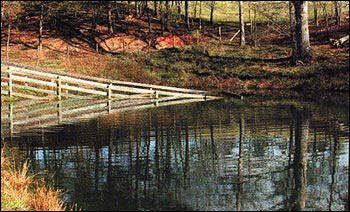
Importation of live fish from other states can be approved but this activity requires authorization from the UDWR Wildlife Registration Office and a permit from the Utah Department of Agriculture and Food. Commercial ponds (for example, fee fishing ponds and private fish hatcheries) are also regulated by the Utah Department of Agriculture and Food. The requirements, forms and fees for these types of ponds are different than those for private fish ponds.
Pond owners must renew their COR each year. Renewal is achieved by submitting an Annual Report of Live Fish Acquired, a $20 renewal fee and a $5 nonrefundable handling fee. If the renewal application is not turned in on time, a $10 late fee is assessed. If the renewal application is turned in more than 30 days late, the application is treated as a new application and all of the initial fees apply.
All ponds must be inspected every six years and another $25 pond inspection fee is charged at that time.
Getting approval to stock fish in a private pond is fairly easy but it can take a significant amount of time. Forms must be filled out, biologists must arrange to view the pond and an approved source of fish must be obtained. Therefore, anyone hoping to stock fish for the summer angling season should submit an application as soon as possible.
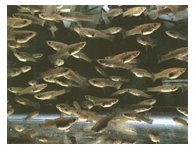
Cold Springs Trout Farm
2284 N Fruitland Dr
NORTH OGDEN, UT 84414 - 2924
(801) 782-7282
Spring Lake Trout Farm
3409 W 12300 S
PAYSON, UT 84651 - 9660
(801) 465-2934
Utah Fishing Destinations
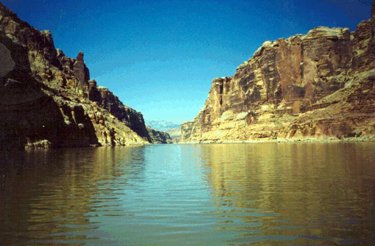
Urban Fishing Opportunities
Bear Lake
Big Fish Tackle Destinations
Flaming Gorge
Disabled Access
Fish Lake
Fish Stocking Schedules
Lakes and Reservoirs
Lake Powell
Blue Ribbon Fisheries
Southern Utah Wild Trout Streams
Advisories and Tips
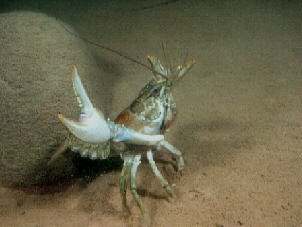
Tips from Big Fish Tackle
Prevent the Spread of Mussels in Utah
Health Advisory on Utah Waters
Whirling Disease Website
New Zealand Mudsnails
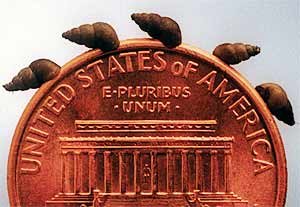
HELP PREVENT THE SPREAD OF WHIRLING DISEASE
Whirling Disease found in Green River Drainage
One of Utah's most prestigious fishing waters may soon be seeing the effects of whirling disease. The microscopic parasite which causes this fish disease with potentially serious effects, has been found in the Green River drainage in Wyoming, upstream from Flaming Gorge Reservoir.
Currently, no serious impacts to fish populations have been observed in this water, although serious impacts are visible in Montana and other states.
Fisheries Chief, Mike Stone, reported that samples taken from Forty Rod Creek, near the Daniel Hatchery, showed presence of the parasite, as confirmed by two laboratories. Forty Rod Creek is a small drainage flowing into the Green River west of Pinedale. Fish from other nearby waters are currently being tested to determine the extent of this problem in the Green River drainage.
Stone said Wyoming fisheries managers are disturbed about this discovery because it is in a drainage where the parasite has not been found before and it is near a hatchery. Whirling disease has never been found in any Wyoming hatchery.
The source of infection is not known. Whirling disease is caused by a microscopic parasite which attacks the cartilage in the head and spine of young fish. Fish sometimes display a whirling behavior and develop a black tail. Because the disease affects young fish smaller than four inches in length, anglers normally do not notice any signs of the disease. There is no human health risk.
Stone added that studies, so far, indicate rainbow trout are most susceptible to the disease, but fish testing positive from Forty Rod included rainbow, cutthroat and brown trout.
Anglers can take several steps to help control the spread of whirling disease. Mud should be washed from boats, trailers, waders and float tubes before leaving a river or lake. No water, mud, fish or fish parts should be transported from one river basin to another. Fish heads, skeletons or entrails should not be thrown in any body of water. Fishing equipment can be disinfected at home with a solution of 3/4 cup chlorine bleach per gallon of water.
Tips for Anglers to Prevent Spread of Whirling Disease
Thanks to a number of factors, including preventative efforts by anglers, Myxobolus cerebralis, the parasite that causes whirling disease in salmonids (trout, salmon, whitefish, grayling) is found in relatively few waters in Utah.
Anglers can help contain the disease by following a few simple procedures, outlined in the Division of Wildlife Resources
"Whirling Disease and Utah Trout: What Utah Anglers Need To Know" brochure:
If fishing in an area known to be contaminated with whirling disease, clean all equipment of mud (boats, trailers, waders,
boots, float tubes and fins) before leaving. Thoroughly dry equipment in the sun, if possible, before reuse. If you are
traveling directly to other waters, clean your equipment with a strong solution of chlorine bleach or use another set of
equipment.
Don't transport live fish between bodies of water. This practice could spread disease and is strictly illegal.
Don't dispose of fish heads, skeletons or entrails in any body of water. Fish parts should be disposed of in the garbage,
by deep burying or by total burning.
If you observe the symptoms of whirling disease in fish (various deformities of the head, twisted spines, a black tail or
fish swimming in whirling motions), or if you observe illegal fish stocking, contact your local Division conservation officer
or call the Division's poaching hotline at 1-800-662-3337.
Anglers are strongly encouraged to follow these procedures when fishing at the following waters, which staff at the Division's
Fisheries Experiment Station report have tested positive for the whirling disease parasite:
Whirling Disease Infection Map of Utah
Fremont River, Spring Creek, Um Creek
Mill Meadow Reservoir
Forsyth Reservoir
Johnson Valley Reservoir
Otter Creek
Otter Creek Reservoir
Minersville Reservoir
Beaver River (tributary to Minersville Res.)
Geyser Creek
Geyser Ditch (Buckeye Creek)
Jordanelle Reservoir
Provo River (areas above Deer Creek Reservoir)
Deer Creek Reservoir
Rockport Reservoir
Porcupine Reservoir
Little Bear River
Hyrum Reservoir
Causey Reservoir
South Fork Ogden River (Causey to Pineview)
Logan River
Blacksmith Fork River (lowest part of river, at mouth of canyon below abandoned dam)
Spring Creek Area (College Ward, Cache County)
Weber River
Lost Creek (tributary to Weber River)
East Canyon Creek (tributary to Weber River)
Beaver Creek (tributary to Weber River, near Kamas)
For a free copy of "Whirling Disease and Utah Trout: What Utah Anglers Need To Know," call the Division's Aquatic
Education section at (801) 538-4717 or visit your nearest Division regional office, Division fish hatchery or USDA Forest
Service office.
Attention Willard Bay Anglers
The Division is currently conducting a walleye tagging study at Willard Bay Reservoir. There are about 400 adult walleyes tagged with an individually numbered spaghetti-style tag. The hope is to get enough tag returns to get a good population estimate thereby allowing the Division to make better informed management decisions on this reservoir. It would be greatly appreciated if anglers would provide us with the following
information:
Tag Number
Date caught
Where caught (as close as possible)
Wether the fish was kept or released (with tag intact)
How many other untagged fish were caught that day
Optional items include:
Name, address, phone number (those providing this information will be given a history of the tagged fish)
This information can be sent directly to Kent Sorenson via E-mail (nrdwr.ksorenso@state.ut.us) or to any Division representative in the Northern Region Office. A creel survey is also underway at Willard Bay and we encourage anglers to provide accurate information to our creel clerks throughout the summer.
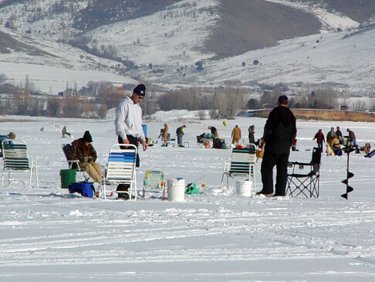
Listen to our Programming
You can find Western Life Radio on several fine stations throughout Utah. To find a station near you, visit the Network site
Listen to our Daily Drivetime Segments
Monday-Friday
KCYN 97.1 FM in Moab 8:40 a.m. and 4:50 p.m.
KYAH 540 AM in Delta 2:15 a.m. and 3:15 p.m.
KOAL 750 AM in Price 7:30 a.m. and 4:30 p.m.
KTMP 1340 AM in Heber 7:55 a.m. and 3:55 pm
KCPX 1490 AM in Spanish Valley 7:40a.m. and 4:40 p.m.
Listen to the Saturday Weekend Edition
Saturdays
KCYN 97.1 FM in Moab 7:00 - 8:00 a.m.
KYAH 540 AM in Delta 10:00 -11:00 a.m.
KTKK 630 AM in Salt Lake 2:00 -3:00 p.m.
KALL 700 AM in Salt Lake City 10:00-11:00 am
KCPX 1490 AM in Spanish Valley 7:00 -8:00 a.m
Listen to the Sunday Weekend Edition
Sundays
KCYN 97.1 FM in Moab 8:00 - 9:00 a.m.
KYAH 540 AM in Delta 10:00 -11:00 a.m.
KALL 700 AM in Salt Lake City 9:00-10:00 a.m.
KOAL 750 AM in Price 10:00-11:00 a.m.
KCPX 1490 AM in Spanish Valley 8 -9 a.m.
